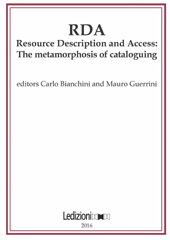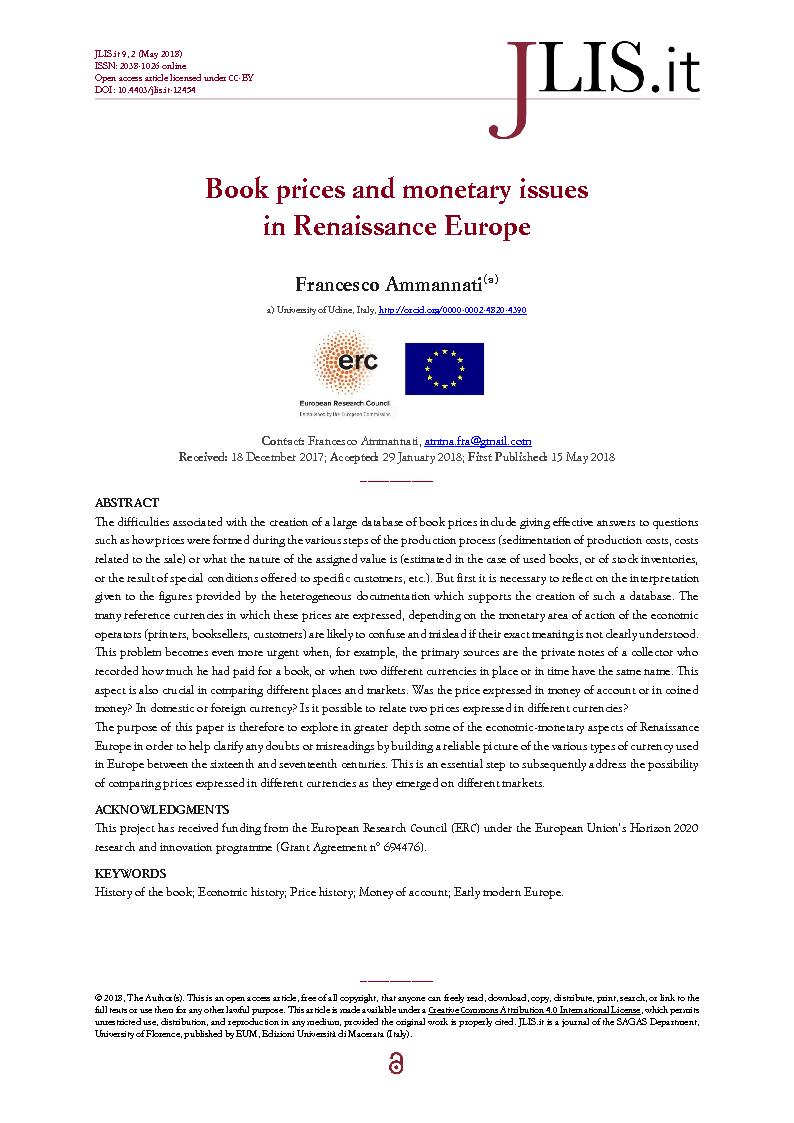Book prices and monetary issues in Renaissance Europe
P. 179-191
Le difficoltà legate alla creazione di una banca dati dei prezzi dei libri comprendono la possibilità di offrire risposte efficaci a domande quali le modalità della formazione del prezzo durante le varie fasi del processo produttivo (sedimentazione dei costi di produzione, costi relativi alla vendita) o la natura del valore assegnato (stimato nel caso di libri usati, di scorte di magazzino, o a seguito di condizioni speciali offerte a specifici clienti, ecc). Ma prima di tutto è necessario riflettere sull'interpretazione da dare alle cifre fornite dall'eterogenea documentazione che permette la creazione di tale banca dati. Le numerose valute di riferimento in cui i prezzi sono espressi, a seconda dell'area monetaria in cui si muovevano i diversi operatori economici (editori, commercianti, clienti), rischiano di confondere e fuorviare se il loro esatto significato non è chiaramente compreso. Questo problema diventa ancora più urgente quando, ad esempio, le fonti primarie sono le note private di un
Questo aspetto è cruciale anche per confrontare i diversi luoghi e mercati. Il prezzo era espresso in moneta di conto o in moneta coniata? In valuta nazionale o estera? È possibile rapportare due prezzi espressi in valute diverse? Lo scopo del presente contributo è quindi quello di approfondire alcuni aspetti economico-monetari dell'Europa rinascimentale per contribuire a chiarire eventuali dubbi o fraintendimenti, costruendo un quadro attendibile dei vari tipi di moneta utilizzati in Europa tra il XVI e il XVII secolo. Si tratta di un passo essenziale per affrontare successivamente il confronto di prezzi espressi in più valute poiché emersi su mercati differenti. [Testo dell'editore]
The difficulties associated with the creation of a large database of book prices include giving effective answers to questions such as how prices were formed during the various steps of the production process (sedimentation of production costs, costs related to the sale) or what the nature of the assigned value is (estimated in the case of used books, or of stock inventories, or the result of special conditions offered to specific customers, etc.). But first it is necessary to reflect on the interpretation given to the figures provided by the heterogeneous documentation which supports the creation of such a database. The many reference currencies in which these prices are expressed, depending on the monetary area of action of the economic operators (printers, booksellers, customers) are likely to confuse and mislead if their exact meaning is not clearly understood. This problem becomes even more urgent when, for example, the primary sources are the private notes of a collector who recorded how much he had
This aspect is also crucial in comparing different places and markets. Was the price expressed in money of account or in coined money? In domestic or foreign currency? Is it possible to relate two prices expressed in different currencies? The purpose of this paper is therefore to explore in greater depth some of the economic-monetary aspects of Renaissance Europe in order to help clarify any doubts or misreadings by building a reliable picture of the various types of currency used in Europe between the sixteenth and seventeenth centuries. This is an essential step to subsequently address the possibility of comparing prices expressed in different currencies as they emerged on different markets. [Publisher's text]
-
Artículos del mismo número (disponibles individualmente)
-
Información
Código DOI: 10.4403/jlis.it-12454
ISSN: 2038-1026
KEYWORDS
- History of the book; Economic history; Price history; Money of account; Early modern Europe



